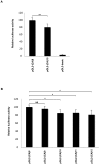Functional variant in complement C3 gene promoter and genetic susceptibility to temporal lobe epilepsy and febrile seizures
- PMID: 20862287
- PMCID: PMC2940893
- DOI: 10.1371/journal.pone.0012740
Functional variant in complement C3 gene promoter and genetic susceptibility to temporal lobe epilepsy and febrile seizures
Abstract
Background: Human mesial temporal lobe epilepsies (MTLE) represent the most frequent form of partial epilepsies and are frequently preceded by febrile seizures (FS) in infancy and early childhood. Genetic associations of several complement genes including its central component C3 with disorders of the central nervous system, and the existence of C3 dysregulation in the epilepsies and in the MTLE particularly, make it the C3 gene a good candidate for human MTLE.
Methodology/principal findings: A case-control association study of the C3 gene was performed in a first series of 122 patients with MTLE and 196 controls. Four haplotypes (HAP1 to 4) comprising GF100472, a newly discovered dinucleotide repeat polymorphism [(CA)8 to (CA)15] in the C3 promoter region showed significant association after Bonferroni correction, in the subgroup of MTLE patients having a personal history of FS (MTLE-FS+). Replication analysis in independent patients and controls confirmed that the rare HAP4 haplotype comprising the minimal length allele of GF100472 [(CA)8], protected against MTLE-FS+. A fifth haplotype (HAP5) with medium-size (CA)11 allele of GF100472 displayed four times higher frequency in controls than in the first cohort of MTLE-FS+ and showed a protective effect against FS through a high statistical significance in an independent population of 97 pure FS. Consistently, (CA)11 allele by its own protected against pure FS in a second group of 148 FS patients. Reporter gene assays showed that GF100472 significantly influenced C3 promoter activity (the higher the number of repeats, the lower the transcriptional activity). Taken together, the consistent genetic data and the functional analysis presented here indicate that a newly-identified and functional polymorphism in the promoter of the complement C3 gene might participate in the genetic susceptibility to human MTLE with a history of FS, and to pure FS.
Conclusions/significance: The present study provides important data suggesting for the first time the involvement of the complement system in the genetic susceptibility to epileptic seizures and to epilepsy.
Conflict of interest statement
Figures


Similar articles
-
Temporal lobe epilepsy and matrix metalloproteinase 9: a tempting relation but negative genetic association.Seizure. 2010 Jul;19(6):335-8. doi: 10.1016/j.seizure.2010.05.003. Epub 2010 Jun 3. Seizure. 2010. PMID: 20605480
-
Community structure analysis of transcriptional networks reveals distinct molecular pathways for early- and late-onset temporal lobe epilepsy with childhood febrile seizures.PLoS One. 2015 May 26;10(5):e0128174. doi: 10.1371/journal.pone.0128174. eCollection 2015. PLoS One. 2015. PMID: 26011637 Free PMC article.
-
Age of onset of mesial temporal lobe epilepsy with hippocampal sclerosis: the effect of apolipoprotein E and febrile seizures.Int J Neurosci. 2017 Sep;127(9):800-804. doi: 10.1080/00207454.2016.1264396. Epub 2016 Dec 12. Int J Neurosci. 2017. PMID: 27875923
-
Fever, genes, and epilepsy.Lancet Neurol. 2004 Jul;3(7):421-30. doi: 10.1016/S1474-4422(04)00808-7. Lancet Neurol. 2004. PMID: 15207799 Review.
-
Progress in searching for the febrile seizure susceptibility genes.Brain Dev. 2009 May;31(5):359-65. doi: 10.1016/j.braindev.2008.11.014. Epub 2009 Feb 7. Brain Dev. 2009. PMID: 19201561 Review.
Cited by
-
Aberrant Complement System Activation in Neurological Disorders.Int J Mol Sci. 2021 Apr 28;22(9):4675. doi: 10.3390/ijms22094675. Int J Mol Sci. 2021. PMID: 33925147 Free PMC article. Review.
-
Genetics of temporal lobe epilepsy: a review.Epilepsy Res Treat. 2012;2012:863702. doi: 10.1155/2012/863702. Epub 2012 Feb 19. Epilepsy Res Treat. 2012. PMID: 22957248 Free PMC article.
-
The BrainDrugs-epilepsy study: A prospective open-label cohort precision medicine study in epilepsy.Neurosci Appl. 2023 Sep 30;2:101136. doi: 10.1016/j.nsa.2023.101136. eCollection 2023. Neurosci Appl. 2023. PMID: 40655979 Free PMC article.
-
Insights into Potential Targets for Therapeutic Intervention in Epilepsy.Int J Mol Sci. 2020 Nov 13;21(22):8573. doi: 10.3390/ijms21228573. Int J Mol Sci. 2020. PMID: 33202963 Free PMC article. Review.
-
Serum concentrations of complement C3 and C4 in dogs with idiopathic epilepsy.J Vet Intern Med. 2024 Mar-Apr;38(2):1074-1082. doi: 10.1111/jvim.17008. Epub 2024 Feb 8. J Vet Intern Med. 2024. PMID: 38329151 Free PMC article.
References
-
- Stevens B, Allen NJ, Vazquez LE, Howell GR, Christopherson KS, et al. The classical complement cascade mediates CNS synapse elimination. Cell. 2007;131:1164–1178. - PubMed
-
- Gasque P, Dean YD, McGreal EP, VanBeek J, Morgan BP. Complement components of the innate immune system in health and disease in the CNS. Immunopharmacology. 2000;49:171–186. - PubMed
-
- van Beek J, Elward K, Gasque P. Activation of complement in the central nervous system: roles in neurodegeneration and neuroprotection. Ann N Y Acad Sci. 2003;992:56–71. - PubMed
Publication types
MeSH terms
Substances
LinkOut - more resources
Full Text Sources
Medical
Research Materials
Miscellaneous

